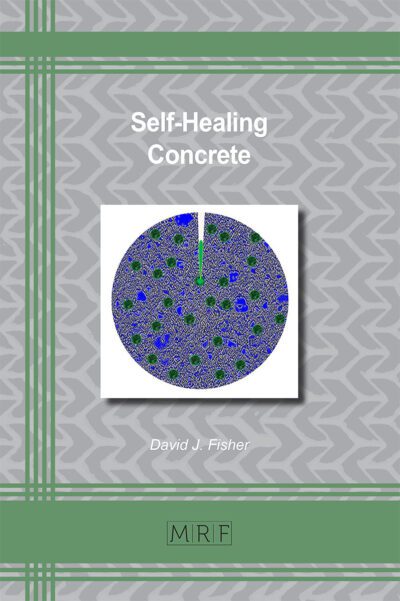–
Green machining of Ti6Al4V/Polymers composite made by pellets additive manufacturing
BOSSU Julien, RIVIÈRE-LORPHÈVRE Edouard, SPITAELS Laurent, DUCOBU François, DELAUNOIS Fabienne, MARTIC Grégory, DELMOTTE Cathy, JUSTE Enrique, PETIT Fabrice
download PDFAbstract. The poor surface finish (arithmetic roughness Ra around 40 µm) of additive manufactured parts leads to the development of hybrid machines to increase the quality of the final part in a lower production time. Hybrid machine already exists for DED (Directed Energy Deposition) and SLS (Selective Laser Sintering) but due to the hardness and the abrasiveness of the sintered material, important tool wear or surface defects on the workpiece can be observed. Therefore, reduced cutting parameters and dedicated cutting tool must then be used which increase the cost of machining operation and the time to produce a part. Green machining can limit these problems: the machining step is performed before sintering when the part does not have its final properties. This kind of material has a pseudo-plastic behavior so machining can be performed with high productivity thanks to lower cutting forces and reduced tool wear. An innovative use of the tool-material couple standard AFNOR Norm NF E66-520 (1999) dedicated to metals is proposed to determine the cutting parameters of a composite based on titanium alloys Ti6Al4V and polymers by measuring surface roughness and cutting forces. A tool dedicated to thermoplastic polymers was tested. Cutting forces and surface roughness (arithmetic surface roughness Ra and total surface roughness Rt) were evaluated for each test. Twelve sets of parameters considering the cutting speed vc, the axial depth of cut ap, the radial depth of cut ae and the feed per tooth fz as variables were tested. For the range of parameters selected, it is possible to achieve a satisfactory surface finish with low cutting forces (Ra remains close to 3.2 μm and cutting forces < 5 N) and stable results.
Keywords
Green Machining, Ti6Al4V, Polymers, Milling, Pellets Additive Manufacturing
Published online 4/24/2024, 10 pages
Copyright © 2024 by the author(s)
Published under license by Materials Research Forum LLC., Millersville PA, USA
Citation: BOSSU Julien, RIVIÈRE-LORPHÈVRE Edouard, SPITAELS Laurent, DUCOBU François, DELAUNOIS Fabienne, MARTIC Grégory, DELMOTTE Cathy, JUSTE Enrique, PETIT Fabrice, Green machining of Ti6Al4V/Polymers composite made by pellets additive manufacturing, Materials Research Proceedings, Vol. 41, pp 1897-1906, 2024
DOI: https://doi.org/10.21741/9781644903131-210
The article was published as article 210 of the book Material Forming
![]() Content from this work may be used under the terms of the Creative Commons Attribution 3.0 license. Any further distribution of this work must maintain attribution to the author(s) and the title of the work, journal citation and DOI.
Content from this work may be used under the terms of the Creative Commons Attribution 3.0 license. Any further distribution of this work must maintain attribution to the author(s) and the title of the work, journal citation and DOI.
References
[1] P. Parenti, S. Cataldo, A. Grigis, M. Covelli, M. Annoni, Implementation of hybrid additive manufacturing based on extrusion of feedstock and milling, Procedia Manuf., Elsevier B.V. 34 (2019) 738–746. https://doi.org/10.1016/j.promfg.2019.06.230
[2] S.C. Altiparmak, V.A. Yardley, Z. Shi, J. Lin, Extrusion-based additive manufacturing technologies: State of the art and future perspectives. J. Manuf. Process. 83 (2022) 607–636. https://doi.org/10.1016/j.jmapro.2022.09.032
[3] R. Eickhoff, S. Antusch, D. Nötzel, T. Hanemann, New Partially Water-Soluble Feedstocks for Additive Manufacturing of Ti6Al4V Parts by Material Extrusion. Materials 16 (2023). https://doi.org/10.3390/ma16083162
[4] E.O. Ezugwu, Z. Wang, M. Materials Processing Technology Titanium alloys and their machinability a review. J. Mater. Process. Technol. 68 (1997) 262-274. https://doi.org/10.1016/S0924-0136(96)00030-1
[5] B.N. Turner, S.A. Gold, A review of melt extrusion additive manufacturing processes: II. Materials, dimensional accuracy, and surface roughness. Rapid Prototyp. J. 21/3 (2015) 250–261. https://doi.org/10.1108/RPJ-02-2013-0017
[6] J.M. Flynn, A. Shokrani, S.T. Newman, V. Dhokia, Hybrid additive and subtractive machine tools – Research and industrial developments. Int. J. Mach. Tools Manuf. 101 (2016) 79–101. https://dx.doi.org/10.1016/j.ijmachtools.2015.11.007
[7] A. Demarbaix, M. Mulliez, E. Rivière-Lorphèvre, L. Spitaels, C. Duterte, N. Preux, F. Petit, F. Ducobu, Green Ceramic Machining: Determination of the Recommended Feed Rate for Y-TZP Milling. J. Compos. Sci. 5 (2021) 231. https://doi.org/10.3390/jcs5090231
[8] L. Spitaels, H. Dantinne, J. Bossu, E. Rivière-Lorphèvre, F. Ducobu, A Systematic Approach to Determine the Cutting Parameters of AM Green Zirconia in Finish Milling. J. Compos. Sci. 7 (2023)112. https://doi.org/10.3390/jcs7030112
[9] L. Spitaels, E. Rivière-Lorphèvre, G. Martic, E. Juste, F. Ducobu, Machining of PAM green Y-TZP: Influence of build and in-plane directions on cutting forces and surface topography. Materials Research Proceedings 28 (2023) 1245-12. https://doi.org/10.21741/9781644902479-135
[10] NF E66-520-6; Working Zones of Cutting Tools. Couple Tool–Material. Association Française de Normalisation AFNOR : Paris, France, 1999.
[11] K. Yoshida, Effects of grain-scale heterogeneity on surface roughness and sheet metal necking. Int. J. Mech. Sci. 83 (2014) 48–56. https://doi.org/10.1016/j.ijmecsci.2014.03.018














